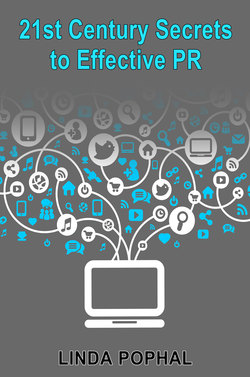Читать книгу 21st Century Secrets to Effective PR - Linda Pophal - Страница 9
На сайте Литреса книга снята с продажи.
Big Benefits for Even Very Small Businesses
ОглавлениеPublicity is key for any business, and while most companies probably think first about paid advertising, there’s no reason you need to spend money to get the word out about your product and service offerings. Savvy marketers are always looking for ways to get free publicity through third parties, such as news outlets or celebrities. For example, having a popular sports figure wear your company’s clothing or shoes can make your brand seem trendy and relevant. An industry publication mentioning an award or positive survey results your product or service received can add credibility and a sense of value. A news story about a grand opening of a new branch of your business increases consumer awareness.
It’s not just the fact that the publicity is free that makes third-party promotion so desirable. Such publicity conveys an added sense of credibility because it’s neutral. As noted in an article titled “How Public Relations Can Help Your Small Business Grow” for Cision PR Newswire: “When a consumer sees third-party coverage of a product or service, it is perceived much differently than a traditional advertisement. When we see an advertisement, we know the company is trying to sell us something. When a third party, such as the media, endorses a product or service, the company gains credibility.”
So how does one conjure up such useful third-party publicity? There are several avenues for business owners to generate third-party publicity through self-promotion, and we’ll talk about them in this book.
Services such as HARO and ProfNet are good examples of tools that even very small businesses can leverage to learn about opportunities for media coverage. The connections made through these channels can help to build an ongoing network of media contacts, assuming the businesses are able to be responsive, thorough, on point and non-promotional.
Social media channels like LinkedIn (B2B primarily), Facebook (B2C primarily) and Twitter (both) also can be used to not only build audiences but also identify and connect with reporters and journalists online. Following key journalists in their industries/markets can provide insights into what topics they’re covering and what they’re interested in, which can open the door for online interactions.
As an article for Kabbage states, “Know your target market, and know the target market of the major publications you are looking into. What kind of press does your target market typically listen to? Once you respond to that question, the answer is the best place to start when it comes to generating good media coverage.”
What’s most important is that small businesses interested in generating media attention focus on providing content that is valuable for the end user audience, i.e., readers or viewers of this content. It’s not about self-promotion; it’s about providing useful information. If you can do this consistently, the reporters will be calling upon you!
As we’ve seen, today’s public relations efforts can take a variety of forms. In this book, we’ve broken the topic down into three parts: media relations, thought leadership and influencer marketing. We’ll also take a look at crisis communications and offer some “bonus material” at the end of this book with insights and perspectives on the current state of PR — what’s changed and what stays the same in a digital media environment.
